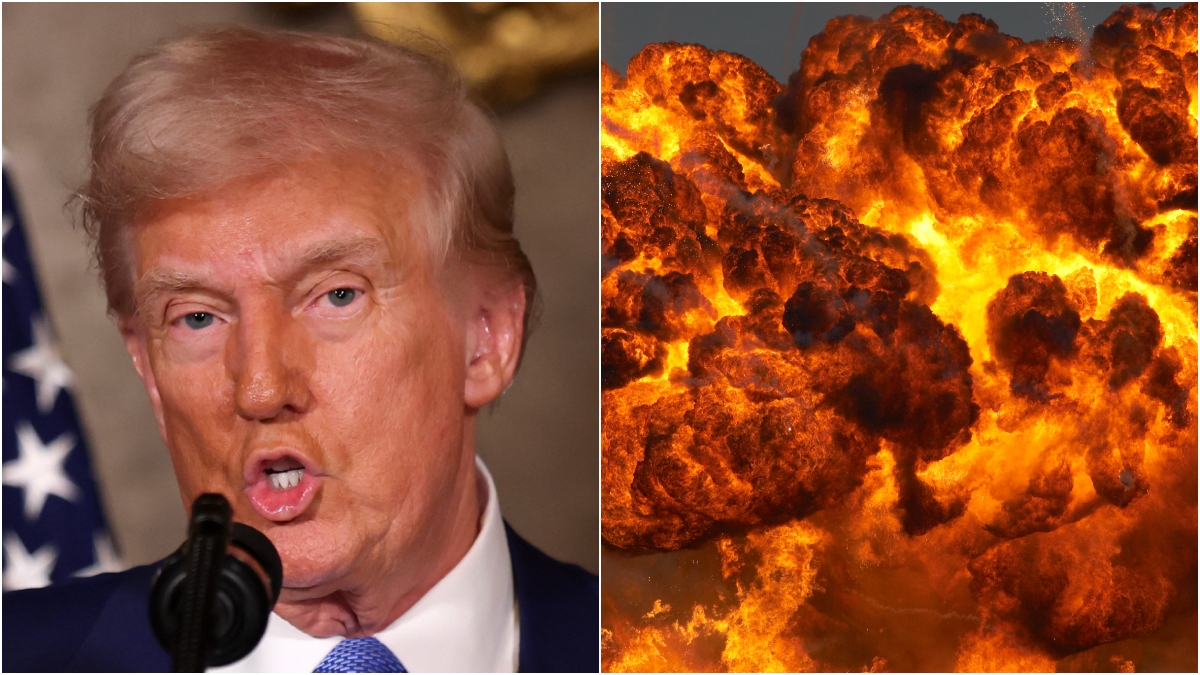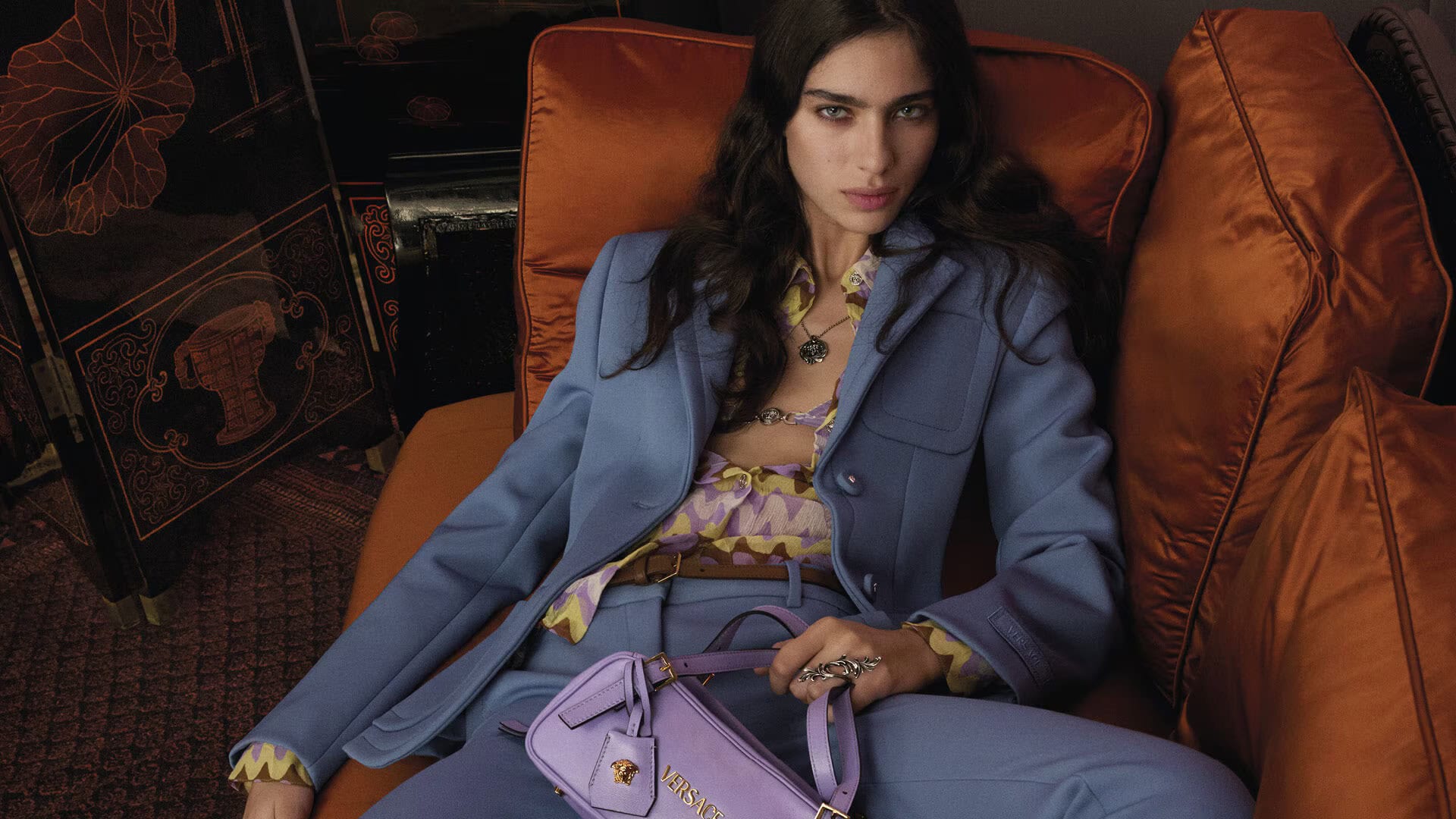Quannah ChasingHorse: The Indigenous American supermodel on bringing change

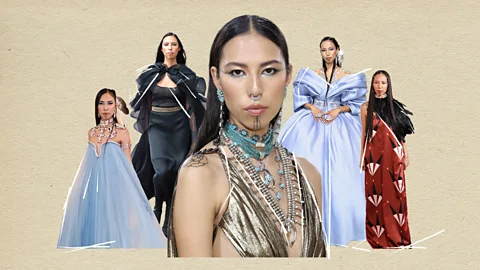 Serenity Strull/ BBC/ Getty Images
Serenity Strull/ BBC/ Getty Images“People are surprised at what I’ve said yes to”: The model, activist and emerging actor talks about her childhood, her culture – and making a difference.
On a gusty night in September, model Quannah ChasingHorse joined the legendary designer Ralph Lauren on his New York Fashion Week catwalk. Earlier that year, she wasn’t even sure she could look him in the eye.
Twenty-two-year-old ChasingHorse is an Indigenous American who is a member of the Oglala Lakota and Hän Gwich’in tribes, and was born on the Navajo Nation reservation in Arizona. She had seen some of Ralph Lauren’s past advertisements, and also designs which she believed were unmistakable copies of Indigenous motifs, and was troubled by what she saw. Back in 2014 Ralph Lauren had apologised for their Native American-themed advertisements, and then in 2022 apologised again for the designs that echoed Native Mexican motifs. The brand promised greater “credit and collaboration” for new garments with Indigenous motifs, and added that the company was deepening its “cultural awareness training”, and broadening its work with Indigenous communities.
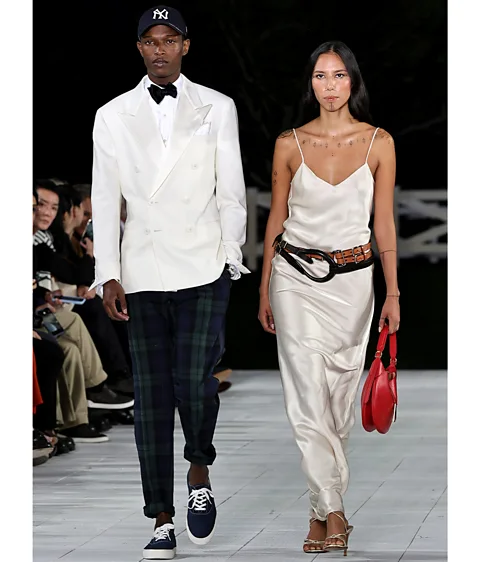 Getty Images
Getty ImagesChasingHorse admits she had to “really wrestle” with whether to work with the fashion mega-brand, or tell them to buzz off. In fact, the Alaska native used a harsher word than “buzz” that cannot be printed here. Still, she ultimately took the job.
“I guess I could have slammed the door on them instead of asking to have a real conversation with them,” she tells the BBC. “But then, you know, nothing changes. And that’s the opposite of how I want to live.”
ChasingHorse has cascading black hair and distinctive geometric chin tattoos – called Yidįįłtoo and sacred to her Alaskan tribal culture – that were hand-poked by her mother, the land activist and dogsled racer Jody Potts-Joseph, in a coming-of-age ritual.
Born on Indigenous land in Arizona, ChasingHorse moved with her mother and brothers to Mongolia as a toddler, where they joined their maternal grandparents, who were Christian missionaries. “I don’t agree with that kind of work,” she says. “But I love them very much. They were also helping smaller communities and nomadic tribes.” On overnight trips to Mongolia’s capital, Ulaanbaatar, ChasingHorse would watch the fashion shows that aired on public television. “After that, I would pose in family photos as if I was a supermodel,” she says. “I was obsessed.”
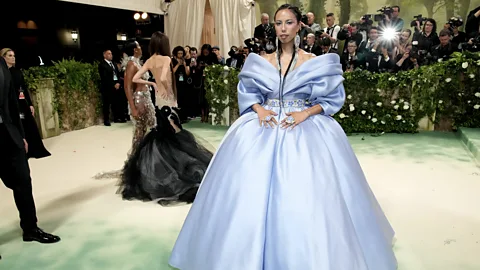 Getty Images
Getty ImagesWhen ChasingHorse turned six, the family took the Trans-Siberian railroad through Europe, camping on Italian beaches before flying home to Arizona, then moving to Alaska. “We set up camp by a river and lived off the land. It was the most magical thing. But now that I’m an adult, I realise we were homeless, and my mom was working so hard to make sure we didn’t know that.”
Potts-Joseph became a public safety officer in their tribal community; they moved into a rustic log cabin with no electricity, and rebuilt it from the ground up. When their small family car couldn’t drive in a blizzard, Potts-Joseph took Quannah and her brothers to school via dogsled. The family attended rallies to defend the Alaskan ecosystem, protect Indigenous women, and direct more healthcare and education to tribal lands. “I had a really rich childhood,” she says. “But being rich had nothing to do with money. It had everything to do with culture, traditions and community. That’s how we survived.”
While speaking at an environmental youth protest in Alaska, ChasingHorse was scouted by casting director Shay Nielsen for a 2020 Calvin Klein campaign. “Her energy and confidence really set her apart,” Nielsen tells the BBC. “At just 18 years old, she was already a powerful leader advocating for her Indigenous community.”
 Getty Images
Getty ImagesAfter her Calvin Klein breakthrough, ChasingHorse was invited to meet with modelling agencies in New York. The problem? She couldn’t afford a plane ticket – until her Indigenous community pooled funds to send the then-teenager to Manhattan. En route, she studied her craft via YouTube videos. “I watched a ton of Vogue models, trying to learn how they walk, how they do their makeup. It was like watching that Mongolian fashion TV all over again.”
Eventually, ChasingHorse signed with IMG Models – the agency that discovered supermodels like Gigi Hadid and Lily Cole – and was sent to meet with Inez van Lamsweerde and Vinoodh Matadin, the photography duo known for cutting-edge images of Taylor Swift and Lady Gaga. “I walked into the casting room, and everyone just kind of stared. I thought, ‘Oh my gosh, am I wrong? Do I not look the way you want me to look?'” She had flashbacks to being bullied in high school for her tall frame and her distinct Native nose. “I thought, ‘Maybe trying to model is a mistake.'”
It was not a mistake. Matadin and Van Lamsweerde took one look at the teenager, and knew he’d found a star. “Quannah’s face and persona is a perfect mix of the most beautiful Native American traditional sculpture and the coolest modern rave girl,” he tells the BBC. “She represents history and the future.” He cast her immediately as the face of a new Chanel campaign; catwalk appearances for designer Prabal Gurung followed, along with catwalk turns for Gucci and Tommy Hilfiger, and advertising work for Net-a-Porter and Stella McCartney.
 Getty Images
Getty ImagesThrough her runway work, ChasingHorse has developed a special relationship with Gabriela Hearst, the 48-year-old Uruguayan designer and recent creative director of Chloé, who employs Indigenous design collectives as part of her production process. “Quannah embodies the type of person that we love to represent us and carry what we do, because she really uses her platform – and where she has come in our industry – to illuminate the need for others,” Hearst tells the BBC.
A force for change
Chasinghorse is now represented by The Society, the powerhouse talent agency that also manages the fashion projects of Kendall Jenner, Pamela Anderson and Dior’s first plus-size talent ambassador, the French singer Yseult. She is also backed by William Morris Endeavor, the talent agency for the likes of Jake Gyllenhaal and Sienna Miller. Why are so many fashion and Hollywood heavyweights banking on her success?
“Quannah redefines beauty, and boldly dismantles outdated constructs. Working with her was nothing short of inspiring,” says Hillary Taymour, the creative director for the sustainable fashion brand Collina Strada, who has cast ChasingHorse in her catwalk collections. “She’s not just a leader. She’s a force.”
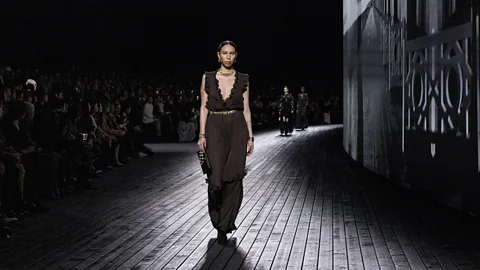 Getty Images
Getty ImagesChasingHorse has also worked with mainstream fashion brands. How does she view the balance between building a successful career and standing by her long-held ideals?
“I love this question!” ChasingHorse says enthusiastically. “Sometimes people are surprised at what I’ve said ‘yes’ to. But what people don’t see is that with every project I do, there are conversations being had and work behind the scenes about how the industry can do better, and be better.” The model’s Zara advertisments for the chain’s Good American collaboration featured recycled and organic cotton, according to established trade platform, Sourcing Journal. Her work with Victoria’s Secret was part of the brand’s 2023 fashion campaign, which featured the most ethnically and size-diverse group of models in the company’s history. “As long as people are respectful, there’s always a chance you can change someone’s mind through a conversation,” she says.
THE CHANGING ROOM
The Changing Room is a column from the BBC that spotlights the fashion and style innovators on the frontlines of a progressive evolution.
At Ralph Lauren, ChasingHorse and her mother had a meeting with the brand. “We explained to them why profiting off Indigenous culture without employing Indigenous artists is a problem,” she said. Thanks in part to her advocacy, the brand created a Native American advisory board, and ultimately paired with the Navajo designer Naiomi Glasses in 2023.
“I think her willingness to speak with brands instead of just cancelling them is pretty powerful,” says Parker Grace, a Navajo photographer and recent graduate of the prestigious Parsons School of Design in New York City. “Seeing her face on billboards uplifts the whole community. It’s a spotlight for good.”
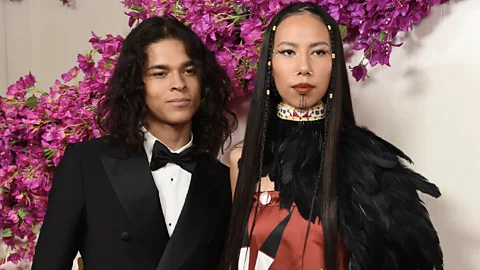 Getty Images
Getty ImagesChasingHorse is using that spotlight to raise awareness for other Native models and artisans. That includes fellow Ralph Lauren face and Navajo tribal member Heather Diamond Strongarm, who has become a rising star on the European catwalks. “A lot of people try to pit us against each other,” ChasingHorse sighs. “That makes me so angry. There should be room for more than one of us.” During Paris Fashion Week, the models convened to honour the tribal hunting season – which they often miss due to runway shows – by sharing dried moose meat in a French hotel room.
ChasingHorse is currently in Los Angeles working on a script for a feature film. She has acted in the hit TV comedy Reservation Dogs,and produced the 2024 documentary Bad River, which she co-narrated with actor Edward Norton.”The fashion industry has been a tool and a resource for me to enter all these other spaces,” she says. “My goal is to open up a bigger worldview for people, in lots of different areas.”
Still, her love for fashion, despite its shortcomings, runs deep. “I was in Venice shooting an ad campaign,” she says. “And I was like, ‘Huh. I used to backpack through here with my family. We didn’t have any money and I would pretend to be a model. And now I’m here, and this is my job.’ I want to hold on to that.”
Related
Trudeau says Canada will issue 25% tariffs on $155B of…
'The Bottom Line' panelists Lee Carter and Liz Peek give their take on President Donald Trump confirming the 25% tariffs. Canadian Prime Minister Justin T
Cartel Violence Kills American Citizen In Brutal Fashion. Will Trump…
PublishedFebruary 25, 2025 4:34 PM EST|UpdatedFebruary 25, 2025 4:35 PM ESTFacebookTwitterEmailCopy LinkAn American citizen is dead after a cartel-linked bombin
Luxury Briefing: Tapestry, Capri and the American fashion portfolio shakeup
In this week’s Luxury Briefing: The fallout from the failed Tapestry-Capri merger continues, with Tapestry selling Stuart Weitzman and Capri reportedly eyeing
Liz Truss tells CPAC UK is ‘failing’ and needs Maga-style…
Liz Truss, the former British prime minister, told a rightwing conference in the US that her country was “failing” and needed a Donald Trump-style “Maga�


